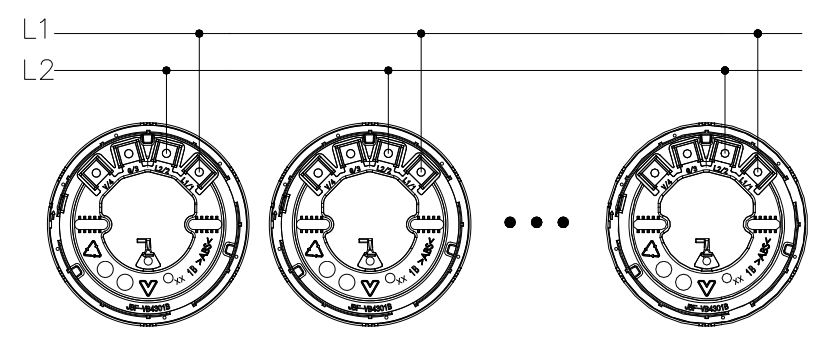JTW-ZD-JBF5110
Two-wire, non-polar, maximum communication distance 3000m, with self-diagnosis, pollution automatic compensation, fixed temperature and ROR alarm function, real-time output temperature value.

































































| Items | Technical Parameters |
| Working voltage | DC18V-27Vmodulation type provided by the control panel |
| Wiring | Signal line: L1, L2 Polarity-free |
| Working temperature | -10~+50℃ |
| Storage temperature | -20~+55℃ |
| Relative humidity | ≤95%(40±2℃) |
| Monitoring current | ≤0.3mA(24V) |
| Alarm current | ≤1mA(24V) |
| RF susceptibility (immunity) | 30V/M |
| Indicator | Flashes when in normal monitoring, steady on when alarms; |
| Dimensions | Φ100mm×41mm |
| Addressing method | Electrical encoder |
| Address range | 1-200 |
| Protective area | 20-30m2 |
| Communication distance | 1500m |
| Applied standard | GB 4716-2005 “Point Type Heat Fire Detector” |



